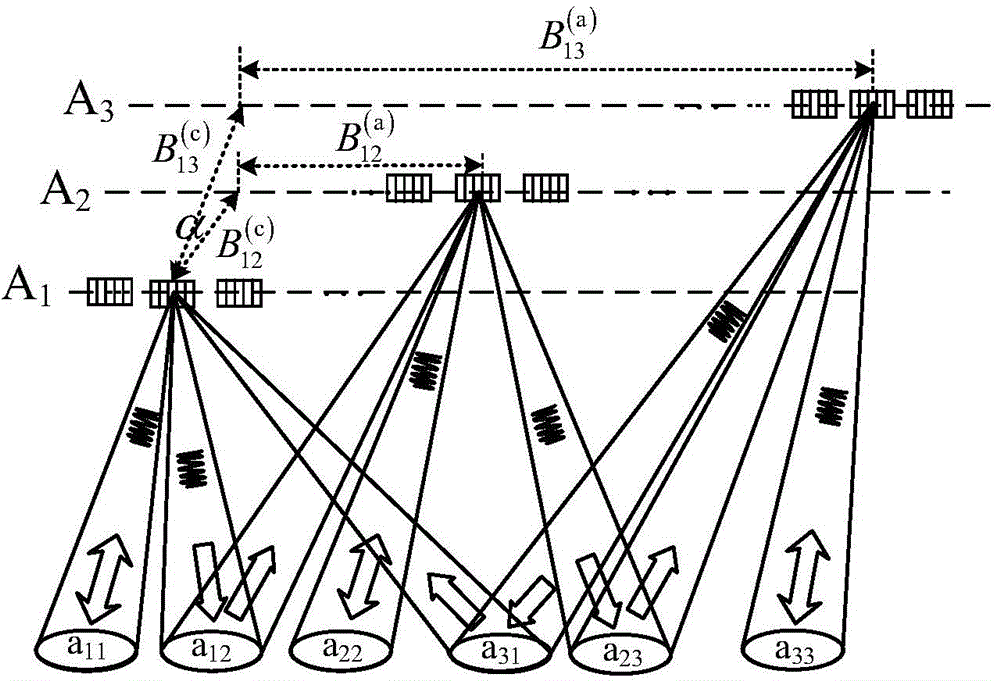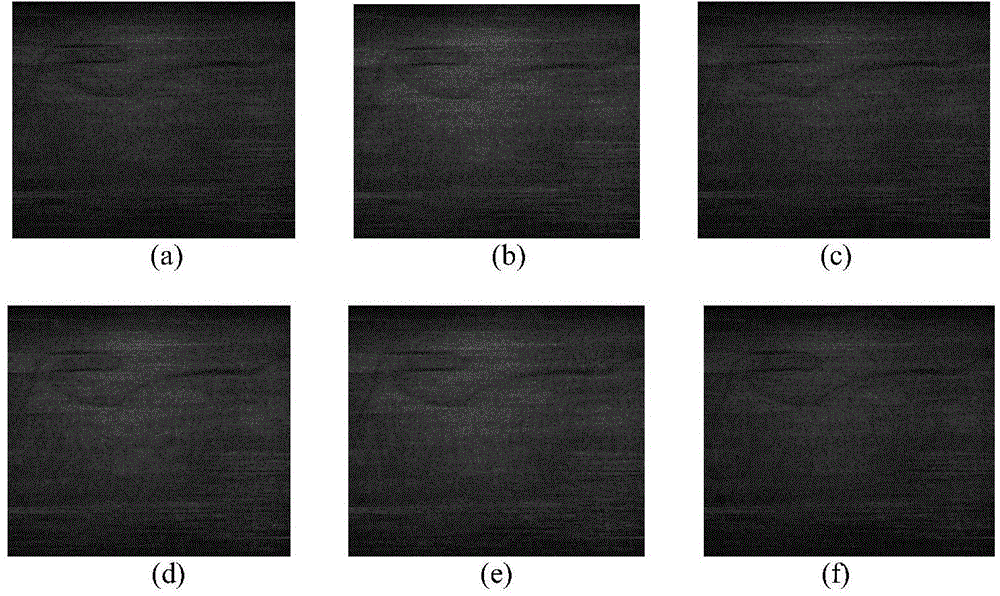Multi-sending-multi-receiving interference synthetic aperture radar space-time two-dimension signal waveform designing method
A technology of interferometric synthetic aperture and multiple transmission and multiple reception, which is applied in the field of space-time two-dimensional signal waveform design of multiple transmission and multiple reception interferometric synthetic aperture radar, which can solve the problems of reducing the performance of multiple transmission and multiple reception interferometric synthetic aperture radar and reducing the width of surveying and mapping bands, etc.
- Summary
- Abstract
- Description
- Claims
- Application Information
AI Technical Summary
Problems solved by technology
Method used
Image
Examples
Example Embodiment
[0031] refer to figure 1 , the specific implementation steps of the present invention are as follows:
[0032] Step 1. Calculate the Doppler center frequency required for waveform design.
[0033] 1a) Calculate any transmit-receive combination A separately i -A j The Doppler center frequency of the transmitted signal and the received signal Doppler center frequency for:
[0034] f ij Tx = 2 V sin β ij Tx / λ ,
[0035] f ij Rx = 2 V sin β ij Rx / λ ,
[0036] Wherein, i=1,2,...,M, j=1,2,...,M, M is the number of array elements, For transmit-receive combination A i -A j The launch oblique angle, For transmit-receive comb...
PUM
 Login to view more
Login to view more Abstract
Description
Claims
Application Information
 Login to view more
Login to view more - R&D Engineer
- R&D Manager
- IP Professional
- Industry Leading Data Capabilities
- Powerful AI technology
- Patent DNA Extraction
Browse by: Latest US Patents, China's latest patents, Technical Efficacy Thesaurus, Application Domain, Technology Topic.
© 2024 PatSnap. All rights reserved.Legal|Privacy policy|Modern Slavery Act Transparency Statement|Sitemap



